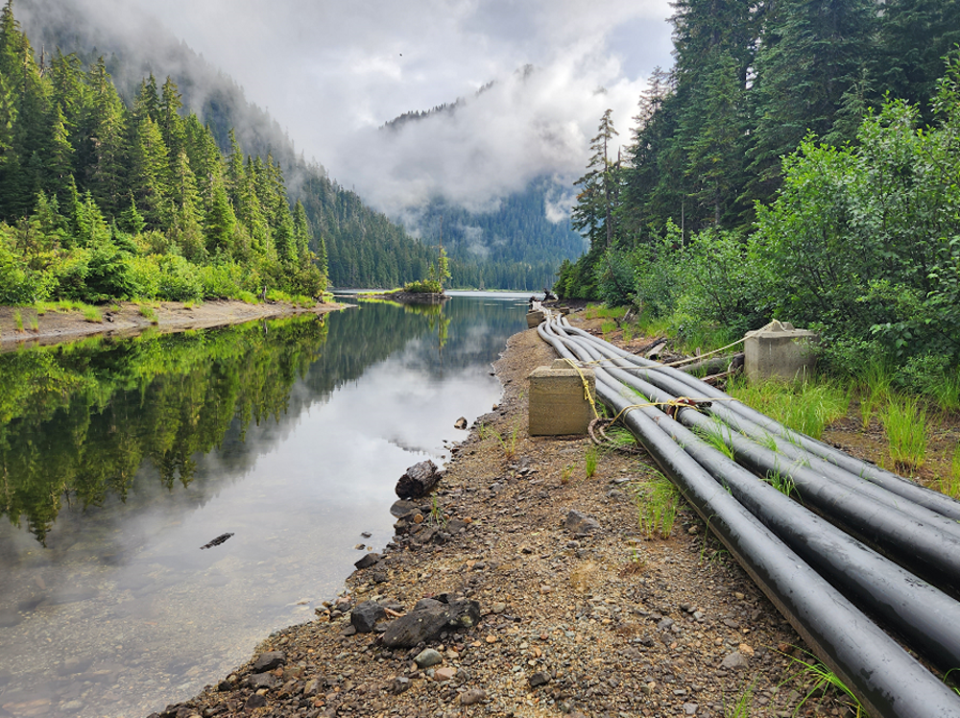Permission to leave the siphons in place at Chapman and Edwards Lakes until fall 2027 will be requested by the Sunshine Coast Regional District (SCRD). Those are used to draw from the lakes to supply the Chapman Water System after lake water levels decline in summer months. The ask for the siphons to remain in place will go to the shíshálh Nation and the province, as authorized by the board at its May 8 meeting.
Moving that work forward is critical, according to staff, and the item moved from committee debate to board consideration on the same day. “If all the required authorizations for ongoing use of the siphon systems are not applied for or are not granted, the SCRD will need to start the preparations to remove both systems by August 1, 2025, in order to have them removed when operationally possible. Under these circumstances the SCRD would not be able to use the syphon systems in 2025," said a staff report on the committee meeting’s agenda.
Mid-channel gauge installation required
In 2024, when the SCRD requested support for use of the siphons in 2025 and 2026, the Nation included a condition that a hydrological gauging station be constructed below the confluence of the outlet channel from Edwards Lake and Chapman Creek, the document said.
Elphinstone area director Donna McMahon inquired about the gauge’s purpose and how staff propose to do the installation in such a steep and remote area.
Citing staff’s plan to have the new gauging “operational after this year,” manager of infrastructure Remko Rosenboom outlined the steps needed to get there. First, a location for the gauge must be chosen and given the rugged terrain and lack of roads in the area, the site will likely be one with helicopter access. With a site selected that would be followed by design work, obtaining permits, then tendering, construction and commissioning. He said he hoped the gauge infrastructure could be “put online” so that data could be accessed live, “but that would need some form of power: source to be determined."
From the staff perspective, a major benefit of having the gauge will be additional watershed data. “We know the amount of water we release from the two lakes, but to actually see how much is in the creek will provide an extra data point, that will increase our understanding of how the creek behaves during the drought season,” he told Coast Reporter in an interview.
No 2025 Chapman EFN adjustment
At the committee meeting, Rosenboom also advised elected officials that the Department of Fisheries and Oceans has requested input into consideration of SCRD requests to adjust the environmental flow needs (EFN) on Chapman Creek. That, he said, will mean an EFN change will not be possible in 2025.
When asked by Coast Reporter for his take on that delay, board chair Alton Toth said, “I think making sure that we do it right, that we are doing it in conjunction with our First Nation partners, and we are respectful of the fish and the habitat and the creek is key. Honestly, if it slows the process down to make sure we are doing it right, I am OK with that and the [gauge] monitoring will help inform the EFN conversations.”
For over five years the region has been exploring adjusting the EFN (a condition of its water licence) to take more water from the creek in late spring/summer months to bump up supplies to Chapman Water System in the months before fish start returning to and spawning in the creek. Amending its water licence would require support from the shíshálh Nation and provincial approval.
Staff updates on both he gauge project and EFN issue are slated to come forward in the coming months.



